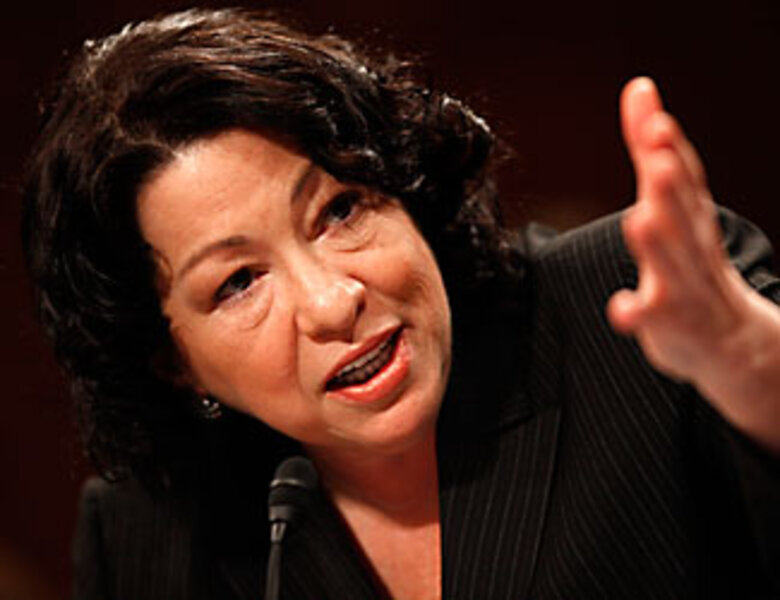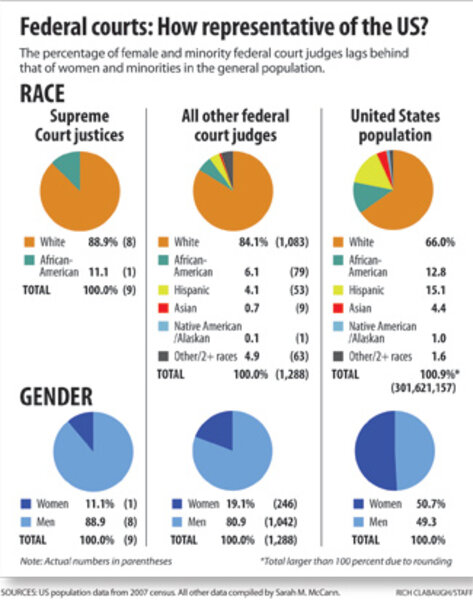State of diversity on the courts
Loading...
With President Obama's nomination of Sonia Sotomayor to the US Supreme Court came renewed attention to diversity on the bench. If confirmed by the Senate, Judge Sotomayor would be the third woman and the first Latina to serve on America's highest court.
But is Sotomayor's nomination indicative of a broad trend toward more diverse state and federal courts? Yes and no.
What is the history of diversity in state courts?
Beginning with the appointment of an African-American to the South Carolina Supreme Court in 1870, it's been a long, slow road for racial and gender inclusion in the courts. In fact, after Reconstruction, there wasn't another African-American state supreme court justice until 1975. The first woman to serve as a chief justice was seated only a decade earlier, in 1965.
Are women making gains?
The answer "depends [on] where you put your starting line," says Ciara Torres-Spelliscy of the Brennan Center for Justice and coauthor of a 10-state study of diversity in state courts. "We've gone from a period where we had almost zero women and zero minorities to a lot of diversity – compared to zero."
Women make up about half of the US population, but only 1 in 5 federal judges is a woman. Among state supreme court justices, the ratio is higher: almost 1 in 3.
Still, progress is uneven: Indiana and Idaho currently have no female Supreme Court justices.
And minorities?
Minorities remain underrepresented on the bench compared with their national population. Whites make up 84 percent of the federal judiciary; African-Americans make up 8 percent of the federal judiciary, though they are nearly 13 percent of the US population.
Some states are making strides more quickly, Ms. Torres-Spelliscy says. In the diverse state of Florida, two of the seven Supreme Court justices are African-American and one is Latino. The chief justice is an African-American woman.
But gains for women may come at the expense of minority appointees, or vice versa. "Between 1985 and 1999, the number of female state appellate court judges tripled. During that same time, the number of black male appellate court judges dipped," Torres-Spelliscy says. Seven states – Maine, Montana, Nebraska, New Hampshire, South Dakota, Vermont, and Wyoming – currently have no minority judges.
What affects judicial diversity?
Diversity is greatly affected by the way judges are chosen, says Malia Reddick of the American Judicature Society (AJS). Data suggest the most inclusive method is merit selection, where a committee selects candidates on the basis of their qualifications and the governor is obligated to choose from the group of nominees.
Some 54 percent of minority judges and 48.5 percent of female judges chosen for state supreme courts in 2008 were appointed through merit selection, according to AJS research. In contrast, nonpartisan elections produced only 3 percent of minority state supreme court judges and 11 percent of female judges last year.
Law school enrollments also affect judicial diversity. More practicing minority or female lawyers means there's a larger pool to pull from when judicial seats become available.






